Welcome to a new issue of the Journal of Runic Studies, the premier Malkioni publication for studies into the nature of Glorantha. If you haven’t subscribed yet, please consult with the spirit bound to the appropriate electronic page.
God Learner Sorcery
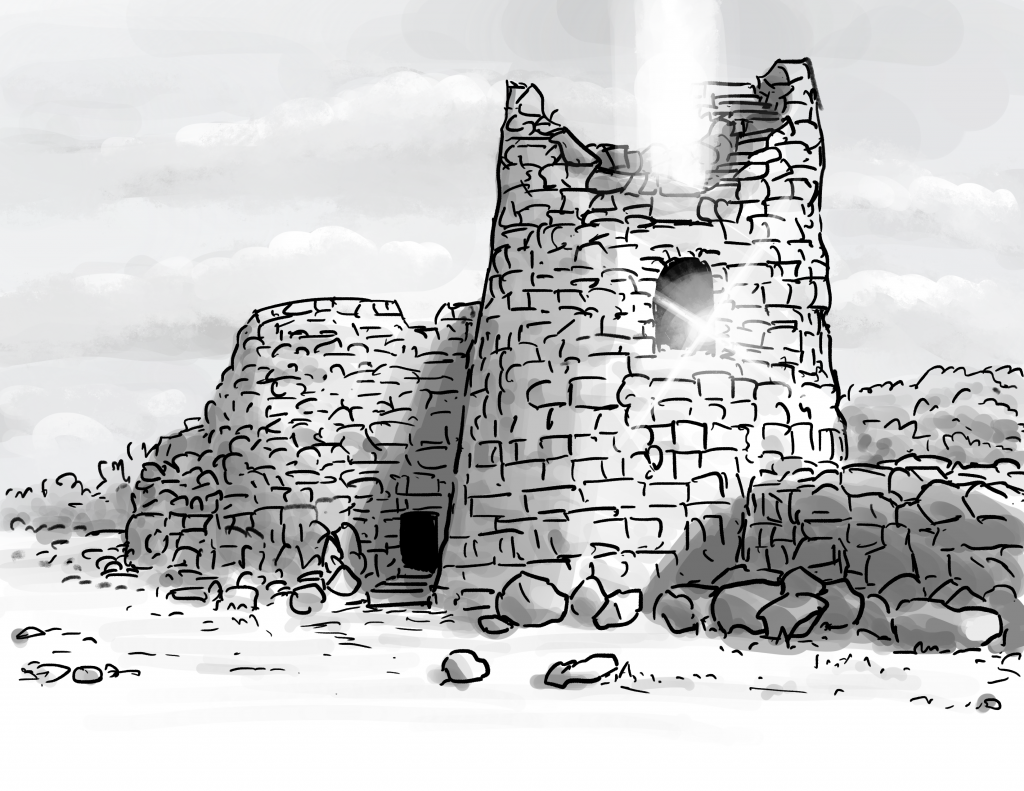
Here is what us God Learners were up to this week.
Initiation Series Episode 4: Skulldixon, the Unecessary Severed Leg, and Ducks

Our Initiation Series continues with Skulldixon, who talks about his recent discovery of RuneQuest, everything he likes about Glorantha, some unnecessary severed limbs, how to deal with mountains of lore, and ducks!
Chaosium News

Here are this week’s Chaosium news!
The RuneQuest Starter Stream, Episode 01
The previously announced RuneQuest actual play has started! Episode 1 is out, and James Coquillat runs his extremely well dressed and tattooed players through A Rough Landing, the first adventure of the Starter Set.
ChaosiumCon Schedule

The schedule for ChaosiumCon is now up on Warhorn! There’s a lot of interesting games and seminars, and it’s going to be tricky figuring out where to go and what to prioritize.
I’m getting nervous since I’m going to be GMing my first convention games there. You’ll find me for “Survey on Mount Seton” (Call of Cthulhu) and “The Bloody Banquet” (RuneQuest).
Chaosium Suspends Plans for Future NFTs
This is not really Glorantha-related, but the whole Chaosium NFT saga has been such a loud thing in RPG circles in the past couple weeks that I figured I would address this here once. The main news is that Chaosium has announced they were suspending their NFT plans for now.
I was already shaking my head a couple years ago when I heard about Chaosium’s plan to use the blockchain, and I kept shaking my head after they announced what it was for. But looking at people with red circles or hexagonal profile pictures reply to Chaosium’s Twitter announcement just adds face-palming to my head-shaking — these were the kind of people interested in NFT collectibles, not so much Chaosium fans.
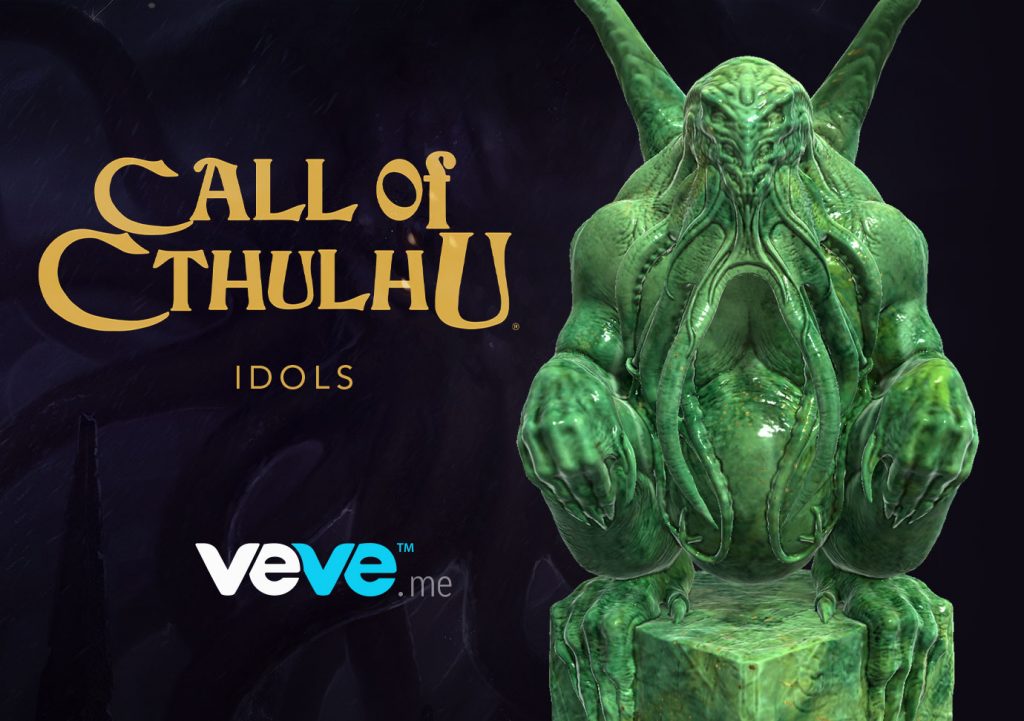
If you don’t know what NFTs are, you probably don’t want to know. It’s an incredibly stupid technology that’s inefficient, badly designed, and doesn’t even do what it says it’s supposed to do. Blockchains are arguably technically interesting, even though they are a badly-scalable solution in search of a problem, but NFTs are just dumb.
Even if Chaosium’s blockchain business was a small drop in an ocean of ugly cryptobro grift, it’s still participating in larger environmental, ethical, financial, and manufacturing issues I’d rather they weren’t associated with. Chaosium could totally sell digital collectibles using some “classic” underlying technology instead — and I hope they do! Using a blockchain-based service like VeVe adds an unnecessary energy wasting scam to the mix, and is ultimately problematic. Arguing that “Disney is using it so it must be OK” doesn’t sound so great to me either.
Seeing Chaosium fans pushing back this hard against the company, and making them change course, makes me hopeful that there will be push back eventually for other things too. In the Glorantha-adjacent parts of Chaosium, I’m mostly thinking about Sandy Petersen’s anti-trans leanings (or his son’s), to which Chaosium only responded with a weak generic statement (I’m not alone here). I enjoy Sandy’s work as much as the next Call of Cthulhu or Glorantha fan, but this isn’t great for a guy that’s usually pretty open-minded, and a company that has been increasing their staff diversity of late.
Jonstown Compendium

The Jonstown Compendium is Chaosium’s community content program for all Gloranthan games, hosted on DriveThruRPG. Disclaimer: all the relevant links are affiliate links that hopefully will let us cover some of the hosting and maintenance costs for the website and podcast! Thanks for using them!
Creatures of Glorantha
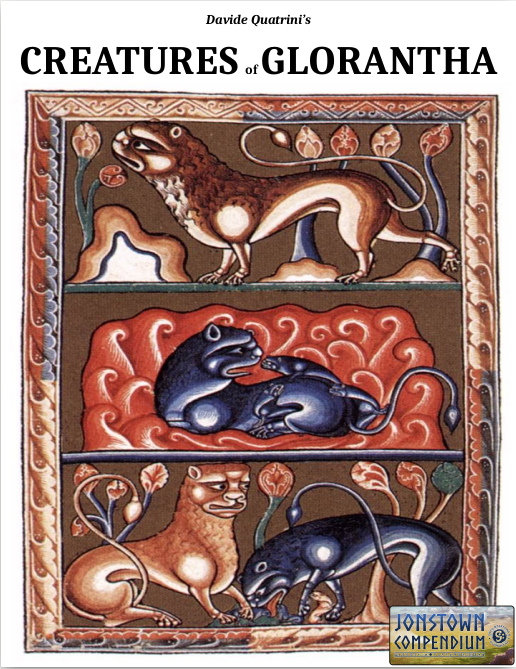
Davide Quatrini has released a small (8 pages) PDF titled Creatures of Glorantha. It adds a few more creatures to a gamemaster’s bestiary:
Pale Masks, Limbscutters, Corrupted Shadows, Tuskapes, Lamias, Goat Suckers and Chimeric Hydras
Jeff’s Notes

Jeff Richard, the current mastermind on everything Gloranthan at Chaosium, is often posting notes and thoughts on the RuneQuest Facebook group. Here’s our curated list from the past week. A partial archive of these sources is compiled on the Well of Daliath.
The Web of Arachne Solara
Arachne Solara, seen whispering in Jeff’s ear in my little drawing above (I hope that was clear!) is known as the “Mother of Time”, since she’s the one who help make the Great Compromise that separated the world of Gods from the world of Mortals, all held together by her “web”.
Jeff talks a bit about her:
Glorantha is held together by the Web of Arachne Solara, a vast net woven out of the strands of myths – each the encapsulated deed of gods or heroes in the Godtime. We can understand these myths through stories, song, and worship – or we can enter the Hero Plane and follow along these strands, experiencing and participating in the events of the Godtime. We can even learn to travel from strand to strand and explore the Godtime itself.
So I guess that heroquesting is effectively travelling over Arachne Solara’s web. Advanced heroquesting techniques letting you jump across it, pull strands together, apart, or “down” to the Mundane World.
Jeff will talk about heroquesting in a little bit but in the meantime, if I was to follow these analogies further, I wonder what “getting stuck” on the web means for heroquesting, or having the World Spider “roll you into a silk swathing band” for later eating, or… wait a minute. If strands of web are myths, and given how spiders produce silk, does that mean myths literally come out of Arachne Solara’s ass? Is that an allegory for how we all invent our own stories? Are we all the World Spider, making shit up as we go? My god, Greg Stafford, you genius bastard.
Each time we follow a strand and participate in the deeds of gods and heroes, we experience a new story. The story can change in details each time – in one version the hero was ambushed by Gagarth, in another by Ygg, or perhaps in one version the hero had a romantic detour to the island of singing nymphs, and in another the hero bypassed the island entirely. But even though the stories change, the underlying myth-strand usually remains visible.
Strands can be joined or separated, maybe even cut altogether if we consider forgotten myths and deities we can’t contact anymore… ok, time to breathe and look at a pretty picture:
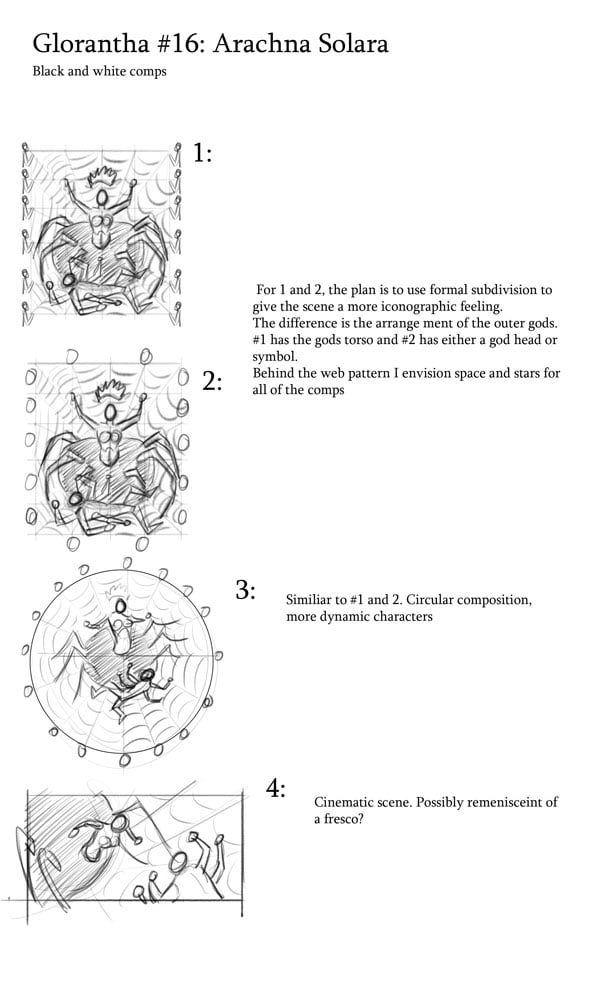
As promised earlier, Jeff continues with what it means for heroquesting:
Through great imposition of will or the use of dangerous magics, it is possible to change a strand of the Web. Perhaps it is forcibly tied to a new node or is cut and bifurcated, and now barely resembles the original strand. Or even worse, with the power of Chaos it can be mutated or warped beyond recognition, or even destroyed entirely. Such actions threaten the Web itself, which is why the Arkat cult demanded no heroquesting without respect.
All cults know how to follow some strands – these myths are recited in song and story, and even experienced during cult worship ceremony. These strands are the source of your Rune Spells and allied spirits. Some cults know more – they know some strands that lead outside of the domain of the god. These paths can be followed by those brave enough to enter the Hero Plane. They contest with the same powers the gods or heroes did, and can gain boons or bring terrible curses upon themselves and their supporters.
And a few individuals know much more – how to change the story through your own will and power, or even how to jump from strand to strand. These are Heroes, Masters of the Tournament of Luck and Death, or other such individuals.
Jeff adds some comments about Lunar myths in particular:
Now an interesting thing comes up when we think about the Lunar Religion. Like everyone else, Lunar cults have their own myth-strands they know and follow. They are unusual in that the Moon Rune is woven into them, which makes them hard for many others to access or understand, but they are there.
As far as the God Learners records go, there was only a few fragmentary Lunar things – the Blue Moon and Artmal mainly. And that was a strange overlap of Sky, Darkness, and Water. So it is safe to say that the appearances of the Moon in the Hero Plane date to the Third Age, most likely since Castle Blue. The Red Goddess said she encountered Arachne Solara on her Goddess Quest, and some of her initiates (all illuminated Rune Masters) claim similar encounters.
Here are a few references to stuff I don’t know at all, or know only a little of… so as always, let’s check some books:
- The Blue Moon used to be some mysterious deity in the God Time, but when the bad stuff started happening, she just crashed down. The Blue Moon Plateau, which you can spot north-east of Peloria, is the largest remain of her body, although there are other pieces of Blue Moon elsewhere. The trolls who live on the Plateau claim to know some super secret things, and they sometimes help out the Lunars. The rest of the Blue Moon is still in the sky, and is responsible for the tides of Gloranthan seas… but because she’s broken, her movements are a bit erratic and she can barely be seen as a “blue streak”.
- Artmal was a son of the Blue Moon. He fought Umath at the beginning of the Gods War, but was later slain by some other Storm God (the God Learners say it’s Orlanth). The Artmali (and all other people descended from the Blue Moon) have blue skin, and the blue skinned people living in slavery in Fonrit nowadays are related to them.
So I guess that’s what the “overlap of Sky, Darkness, and Water” comes from: the Blue Moon travels in the sky, but is hidden, and affects the tides.
Now, I’m not sure why the Blue Moon would have been completely absent from the Hero Plane if at least parts of her are still travelling the skies and affecting the tides… but indeed her mythical presence was probably boosted by the Red Goddess’ apotheosis, which happened at the aforementioned Castle Blue.
We know that the Red Goddess is tied to Chaos – did this allow her to introduce something new to the Web? Or does her changes threaten the Web itself? What did the Spider whisper to her?
And it should not be surprising that Arachne Solara is central to many of the Red Goddess’ own deeds.
Given how Chaos is the only way to bring something truly new into Glorantha, maybe that’s how the Red Goddess managed to make new myths, new strands of the web. I think she was really so broken than that there was no way to piece her back together with existing pieces, so she grabbed some new material from outside Glorantha and shaped her new form with it. But it either corrupted her, or she figured that this Chaos thing is very useful, and she’ll keep using it… which, frankly, sounds very much like “being corrupted” by Chaos if you ask me.
By the way, if you’re confused between “Hero Plane” and “God Plane” and “God Time” and what not, you’re not alone. Jeff adds a note on that:
When we remain within the domain of our god – the sacred circle of the worship ground, the walls of the temple, or the Elysian Field of their Godtime presence – we do not heroquest. We enter the Hero Plane, experience the divine realm, offer of ourself to the god, and gain magic and spirits – but this itself should not be described as a heroquest. We do not leave the security of that sacred ground to enter into the dangers of the Web. It is only by going outside the safe and familiar that we heroquest and become heroes.
The Elysian Field reference here points to some Greek mythology, but I assume it’s used to describe a limited, favoured place. So the Hero Plane is easy and nice to access, assuming you’re a devoted initiate of the temple (which you would have to be to worship there anyway), but you won’t get crazy heroquesting gifts until you leave and venture into the mythic landscape.
And thus although it should not be surprising that the Red Goddess has a deep and mysterious connection with the Cosmic Spider, it should also not be surprising that Orlanth, her rival, is defined by the Mastery Rune. More than any other god in Glorantha, he is the patron of heroes and adventurers.
With Arachne Solara’s strong connection to the Fate Rune, I wonder if there’s something there about the Red Goddess’ views on destiny, versus Orlanth’s views on forging your own path. Or something. I don’t know, I’m just spitballing here.
The parable of Arachne Solara’s web reflects our experience as gamers. There is published material on Glorantha – that material is eternal and timeless. Even today, we can go and explore Snakepipe Hollow or defend the Cradle (using our RQG characters even!). These are our myths, our strands of the web.
But every time we experience these materials, we have a different experience. At one level it is the same – sure that’s Snakepipe Hollow or the Cradle – but an another, it can be very different. This is why when Argrath summoned the Champion of Pavis a score of different Rune Lords showed up, each carrying Balastar’s Axe!
If you want your own Balastar’s Axe, check out one of the very first RuneQuest dungeons, Balastar’s Barracks (or here in POD once Chaosium has sold all the original print run). A word of warning: it’s extremely dated, and extremely deadly.
Interestingly enough, that dungeon, and the magical axe of the titular character, were very much pitched as an “in-world” thing in the original scenario. That is: you go in the Big Rubble, enter one particular ruin complex, and find a fancy weapon for you to keep, of which there is only presumably one. However, if you were to heroquest and get the fancy weapon as a heroquesting gift, then potentially other people could do the same, resulting in multiple people with that fancy weapon (although maybe with subtle differences depending on how well they did). So if multiple people eventually carry Balastar’s Axe, you either simply explain it by saying that going down that dungeon sends you on a heroquest… but Jeff is hinting at something much more meta! See also: the God Learners’ secret being something called “RuneQuest Vision”.
This is also how myths and heroquesting operate. We have a myth – a strand of Arachne Solara’s Web. We can experience that myth by following along the path of the strand through the Hero Plane. But our experience of that may differ significantly from that of another group of heroquesters following the same path. Regardless of that, both are right, both have experienced the true myth. And their followers may end up telling rather different stories about the same myth.
But this is not because of “pr spin” or the demands of the powerful – it is primarily grounded in experience.
Werewolves of Glorantha
I asked a question on Facebook about the Telmori Wolfbrothers, Glorantha’s werewolves, and what kind of horror movie tropes apply to them. Jeff’s answer is interesting enough to include here:
The Telmori have two basic forms – more or less ordinary human or all-but-invulnerable wolf (when the moon is full). When they are human, they can become wolf-like through magic, but to become fully wolf is a lot of magic. Or it just happens automatically on Wildday.
On Wildday the Telmori are a tribe of four-legged wolves. If well fed, they don’t have a particular compulsion to eat livestock or humans. If there is a human group that they trust and are loyalty to, they continue with that loyalty.
So basically unless there are other factors at play, the Wildday Telmori aren’t the type who go on wild, bloody rampages, and wake up the next day covered in mud and blood, wondering what happened. They are quite still in control, and at half of their original INT, they can probably carry out missions that were planned in the previous days.
You can find Telmori in the Sartarite capital, Boldhome, and in cities like Jonstown. They have a history of providing an elite troop to the Prince of Sartar, to act as bodyguards. The last time I looked into this, there was a lot of, ahem, conflicting reports as to which Princes allowed it, and which ones refused to have the Telmori around… so I guess you should feel free to have them in the Boldhome Royal Palace if you want, or not. Whatever fits your campaign. But here’s what Jeff says:
The werewolves in Boldhome tend to seclude themselves on Wildday. They don’t restrain themselves, they just stick to their tribal areas while in four-legged wolf form. Maybe when Salinarg was Prince, they lounged around the Royal Palace like big dogs. But for over 20 years they have been subject to abuse from Sartarite and Lunar alike. I doubt Temertain ever reestablished personal ties with the Telmori (and remember all that Sartar Dynasty stuff is personal, not really institutional) and in any case, he didn’t run Boldhome.
To sum it up:
When the Telmori become wolves, they are still themselves but animals – they are limited to what a very clever dog can process and understand. So they still know who is friendly and unfriendly, and are capable of working together as an incredibly well-trained pack, but they are animals on that day.
Malkioni Society
Here is how wizards can do their thing: they have a whole society to support them:
Malkioni society is logically organized to best support (and control) sorcerers. To be good at it requires intellect and a powerful soul – and to learn sorcery takes many years – even decades – to train. It is a specialty skill like being a good mathematician. This means the vast majority of any human population are not going to be good sorcery specialists.
In terms of RuneQuest rules, it requires an above average INT. The minimum is 13, but you won’t do much without having a much higher INT. The rules that say you can’t improve your INT are, in my opinion, coming from outdated views on intelligence and mental capacities, so in my game I would totally allow improving INT.
But each sorcerer needs to be supported by many workers (mainly farmers, but some crafters, laborers, etc.) in order to have enough food surplus that the sorcerer can focus solely on their craft. Each sorcerer needs to be defended by fighters, as they are vulnerable to physical attacks, and have a tendency to annoy people, especially outsiders. And each sorcerer needs to have some community leader capable of resolving disputes between the sorcerer and the rest of the community, and with outsiders.
This sounds very much like Ars Magica, where magi are surrounded by companions and grogs. In that game, you’re encouraged to adopt a “troupe play” approach, where only one magus comes out at a time, and the other players have secondary characters that are that magus’ companions. The corresponding other magi are working on their research, and mostly out of the picture.
I think using Ars Magica as a model would be a great way to play a Zzaburi wizard campaign that respects how Gloranthan sorcery actually works. However, I get the feeling (from past ImpCon discussions) that Jeff may be more interested in having the Zzaburi as patrons, and the adventurers all playing assistants and bodyguards who, just like Lhankor Mhy sages, only dabble in sorcery. But hey, I could be wrong, we’ll see how the West gets developed.
Voila! The Malkioni system. Clearly every sorcerer agrees this is the best way to organize human society (and in their secret hearts, I am sure the Lhankor Mhy cult knows this!). The only question is where to get the workers, fighters, and community leaders – and how to make sure they keep supporting the sorcerer!
Sources and References for Gloranthan Work
Here are Jeff’s most important sources and references when he’s working. Published sources are:
– Guide to Glorantha: I consult this every few days. Invaluable but normally at a pretty high altitude concerning specific details. But if I need to know how things all over the lozenge fit together, it is ideal.
– Glorantha Sourcebook: I consult this almost every day. Myths, histories, family trees, you name it.
– RuneQuest Core Rules: Loads in here, not just rules.
– RuneQuest GM Adventures: If I need anything on the Colymar Tribe, it is here.
– Trollpak (Chaosium edition): Question on trolls? Here is the answer.
– RQ Bestiary: Question on any creature except trolls? The answer is probably here.
– Borderlands: Shockingly useful whenever I have a question on Praxians of all things.
– Pavis/Big Rubble: Still the foundation for everything in Pavis, the Big Rubble, and the River of Cradles.
– Stafford Library: Probably at least once I week I look up something in GRoY, FS, or HHP.
– Greganth Atlas: At least once a week I look up something in it.
Not all of these sources are equal, though. All of them are available in print or PDF from Chaosium right now, but the last one is a bit of a deep cut. It’s a book that was part of some obscure stuff offered as high backer rewards for the Guide to Glorantha Kickstarter. It’s the one on the upper right on this picture:
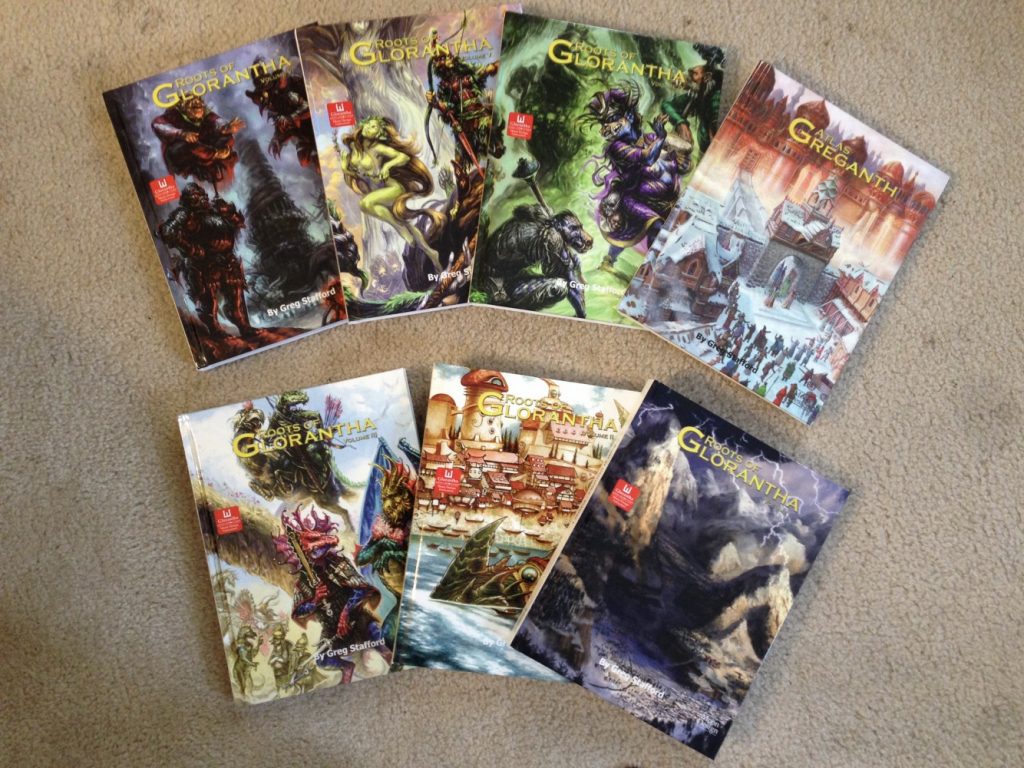
Here’s what Kick Meints says about these rare items:
Published in 2007 and 2015, [the Roots of Glorantha] only contain very early Gloranthan lore, both in terms of when they were written (1966-1976) and the eras of Glorantha they document (early, early stuff). Most of the maps related to these writings ended up in the Greganth Atlas, another very rare item, although not technically one of the Roots of Glorantha series.
[…] Greg originally sold these in 2007 to a very small handful of super scholar-collectors for big $$$. This was at a time when Greg’s income was quite low. That’s the main reason we did likewise when we offered them as part of the Guide to Glorantha Kickstarter. Greg didn’t want us to significantly lower the price he had charged previously.
Find out more information here.
Now, onto Jeff’s unpublished sources. These include, without much surprise, many of the upcoming RuneQuest books: Cults of Glorantha, Sartar Homeland stuff (Sartar Players Guide, Bolhome Book, Dragon Pass Gazeteer), other gazeteers (Heortland, Esrolia, Prax, Shadowlands), and the Hero Wars Campaign. Jeff frequently consults some spreadsheets, too, like the cult distribution and cult compatibility tables. Finally, there’s another couple of obscure references: the “Master Map series”, which I assume are Greg Stafford’s original maps of Third Age Glorantha, and the “Mythic Map series”, which is probably the same but for God Time Glorantha.
Finally, you have probably already guessed the out of print sources:
– Dragon Pass/WBRM: the single most important Ur-Source on the Hero Wars and everyone in it. Consult it at least once or twice a week.
– Nomad Gods: the single most important source on the Praxians. I consult it everytime Prax comes up.
These two board games are supposed to get a reprint some time in the next few years.
Race and Ethnicity in Glorantha
Jeff once again surprisingly posted in a BRP Central thread that frankly looked like a potential dumpster fire from the start. But this is interesting stuff. The original question was basically whether Lunars and Tarshites and Praxians and Grazelanders and such presented a “different ethnicity and/or race” from each other. Jeff starts with some broad strokes:
Race: Categorising people into groups based on shared physical or social attributes that the categorised perceives as being different from those of other groups of the same species. Members of these groups may or may not be aware of their presumed membership. Example, the various Praxian Animal Rider Tribes, the Men-and-a-Half, Wasp Riders, Green Elves, Brown Elves, Snow Trolls, trollkin, Malkioni castes, etc.
Ethnic Group: is a grouping of people who identify with each other on the basis of shared attributes that distinguish them from other groups. Those attributes can include common sets of traditions, ancestry, language, history, society, culture, nation, religion, or social treatment within their residing area. Example: Colymar Tribe, Sartarites, Lunar Tarshites, Tarsh Exiles, Lunars, Orlanthi, Dara Happan, Esrolian, etc.
As you can see, these are really broad labels. In the Dragon Pass area cult, language, and tradition are the main things that define an ethnic group. Which isn’t surprising – cult is the root of culture after all.
Now, some practical example:
If a Sartarite talks to a Lunar Tarshite that person is probably going to lack the markers that identify one as a Sartarite – membership in a Lightbringer cult or its associates? Membership in one of the Sartarite tribes? If the conversation is in Tarshite (and not New Pelorian) language won’t be a problem, but lack of cult or tribal ties will.
But what are those markers? Well the Orlanthi tend to tattoo their group associations on their body. Hey, that woman has Colymar markings! And also their cult initiations – hey that person is marked with the Runes of Orlanth. That helps members of Orlanthi society navigate around different Orlanthi groups.
What isn’t a big deal? Skin color or hair color. The Orlanthi tend to be brownish skin with brown or reddish-brown hair, but there’s plenty of diversity.
The sneak peek we got about the Sartar Homeland boxed set indeed shows the diversity you find within the Orlanthi of Sartar:
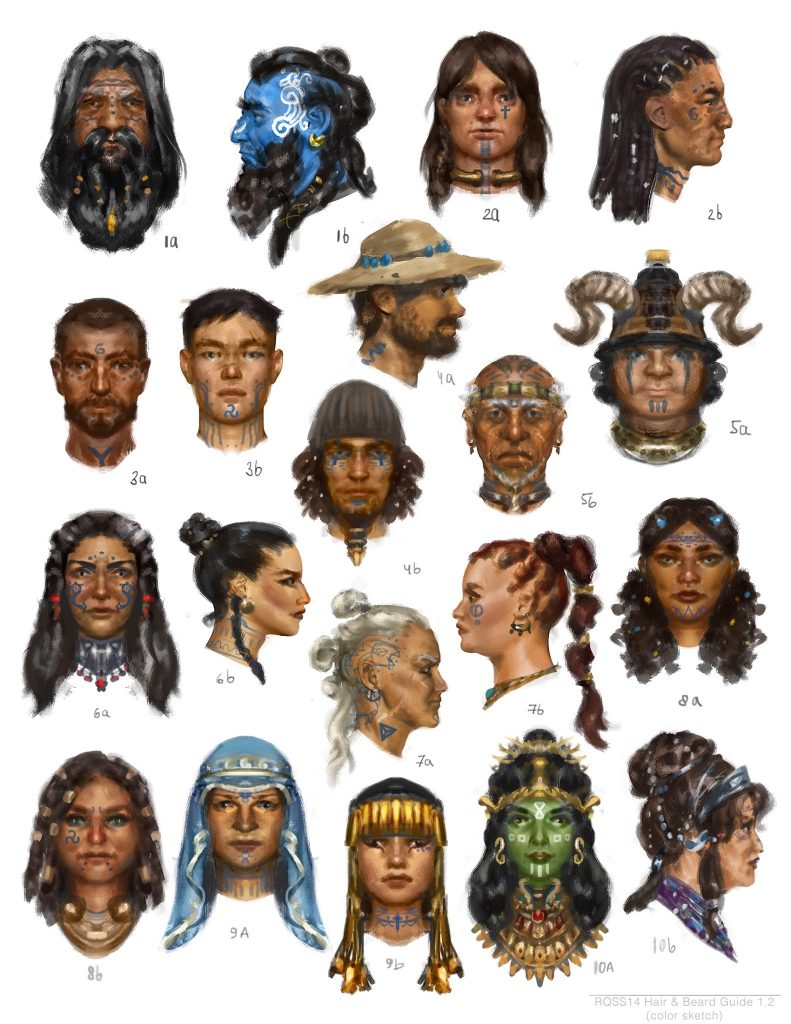
Now wait, you might say, Bison Riders look differently from Impala Rider and from the Men-and-a-Half! Sure, but that is not the source of their group identity. The key elements of being a Bison Rider are (drumroll) – riding a bison. If you don’t ride a bison, you can’t be a bison rider. If you ride a bison, then we look to see if you are marked with Clan markings. Same thing with Wasp Riders, etc.
So about the original question:
Would an Orlanthi recognize a Lunar based purely on physical characteristics? Nope. How about costuming? At the extremes, yes – but not in the middle. So yes, an Orlanthi might assume the person wearing the big red cloak and the breastplate featuring the Red Goddess is a Lunar, that is until they see the markings of Death and Truth and the nice iron sword that indicates that this is a Humakti (who often wear red cloaks because of blood and death) and the breastplate shows that she defeated a Seven Mothers Rune Lord in single combat.
I like this idea of a warrior wearing the gear of significant defeated enemies — I’ll have to put some of that in my games!
That’s why Orlanthi culture has all sorts of social rituals to help sort out strangers into friends, neutrals, and enemies. Rather than attack on sight, the Orlanthi tend to ask strangers, “hey who are you? Did you kill any of my relatives?” and that kind of thing to figure out how to interact with them.
Some of these “social rituals” are mentioned in the RuneQuest rules, like the “Wind Lord Challenges”. Older Gloranthan products included various other such traditions, like that of hospitality.
In our world, categorising people into races was associated with the rise of vast transoceanic empires that ruled over many disparate peoples not associated with each other through language, religion, or tradition. If that exists in Glorantha, it would like be something you might have seen in the Middle Sea Empire.
The ruling elite of the Middle Sea Empire were Hrestoli Malkioni. They likely tended to see the world through the lens of class – who are the talars, horals, zzaburi, and dronars of the world? This matters when bringing new people into the empire. Are those barbarians basically warriors or are they workers? Can our talars marry the sons and daughters of their rulers? Are those Dayzatar mystics essentially zzaburi? Places like Teshnos, Safelster, Umathela, Jolar, and Kralorela may have been to a greater or lesser degree affected by this.
The Middle Sea Empire was a Second Age nation that stretch across all of Glorantha. Being a Malkioni society at heart, they divide people in castes: talars are nobles, horals are warriors, zzaburi are wizards, and dronars are farmers.
And thus it is not odd they divided peoples into the “races” of Wareran (which likely just really means, “we are familiar with them since at least the First Age”), Kralori (our eastern dominions), and Agimori and Veldang (our southern dominions). Agimori and Veldang were obviously different groups to their Jrusteli conquerers – to start with, the Veldang are blue. And worship very different gods. And everyone else (who get called the Agimori) agreed they are different.
The Guide to Glorantha actually lists most of these under the “human racial types”: Agimori effectively sound like Central Africans, Vithelans are Asians, Warerans are Near and Middle Eastern people, and Veldang are Gloranthan-speicfic blue-skinned people. Jeff nicely solves a few problems here by remapping these classifications to how and when the Middle Sea Empire encountered people.
Further answering the original questions, Jeff adds:
“Lunars” is a super broad category, even by these standards. Do you mean a Seven Mothers worshiper in Boldhome or are we talking about citizens of Furthest? I think in most cases they might be viewed as being different ethnic groups (remember – language, cult, and tradition drive that), but not different races.
Lunar Tarsh is a specific ethnic group. They speak New Pelorian (language), follow the Lunar religion (cult), and have a long tradition of identifying themselves as a group.
And about whether Praxians, Heortlanders, Esrolians, Grazelanders, and so on are different “races”:
Under the God Learner system? Yes. Under the categorisations of whatever Lhankor Mhy just wrote the most influential History of Our Times? Who knows. Maybe he divides people into the categories of Orlanthi, Lunar, Praxians, and Pure Horse People?
Some News of the Heroquesting Rules
Jeff is teasing the upcoming heroquesting rules for RuneQuest, which he has been playtesting a lot lately.
Key highlights – it is definitely not Super RuneQuest, and we are doing our playtesting with the pregens from the Starter Set. Characters with strong Runes and Passions, plenty of Rune Magic and lots of POW and CHA are going to do better than characters with high skills – which is as it should be!
The “Super RuneQuest” mention here refers to some old school of thought that says you encounter super-high-powered NPCs in the God Time, with skills in the 500% or even 1000% range or something. So you need community bonuses to get appropriate skill bonuses, and maybe some custom mechanics for handling large numbers.
The new rules do a fantastic job showing how Gloranthan myths change while the God Time remains eternal and changeless. They really encourage and facilitate exploration of the Hero Plane, and all the players could have something to do.
In order to overcome a (possibly magical) drought the players set off to liberate the waters taken by Aroka. Amusingly, Vasana gained a Dragonbreaking boon in the quest’s climax – she spurned the liberated Blue Woman’s offers and went straight for power over dragons, while Sorala Tor gained insight into communicating with dragons and even a little Dragon Magic. Yanioth gained a magic fruit from the Lord of Trees and is somehow tied with the Poisonthorn Elves, while Harmast now has a magic kid with hooves and antlers. Just a regular jaunt into Hero Plane.
And it is good that the players managed to get extraordinary support from their clan and the Clearwine Earth Temple or there is no way they would have succeeded!
I’ve only run one heroquest so far, using some half-assed custom rules, but the God Time mechanics haven’t really been my main problem — it’s more about that last part: how does community support mechanically help the heroquesters, and what does it mean to go heroquesting “on your own”. I’m very curious to see how these new rules will turn out!
The extra treat in Jeff’s post is a handout he used for the game:
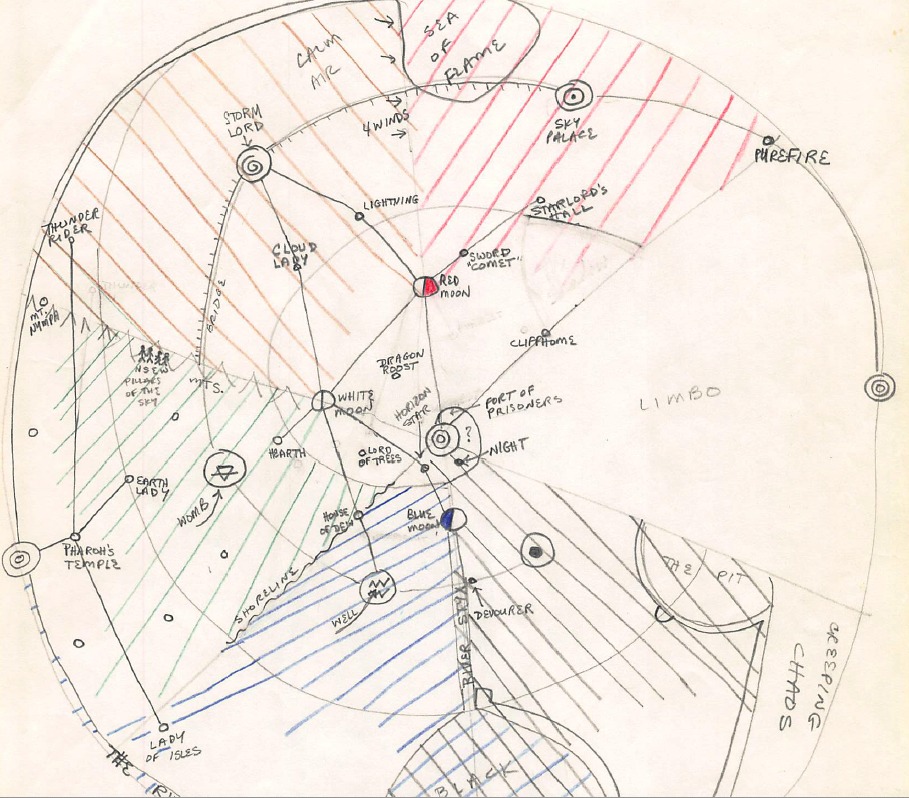
Attached is one of the game aids the players had – a map Sorala Tor had taken from the Holy Country describing the relationship between locations known from the Tournament of the Masters of Luck and Death.
Community Roundup
The community roundup is our highlight of interesting things being mentioned in the Glorantha-related Facebook groups, sub-Reddits, and other similar online places.
Upcoming Miniatures from Mad Knight
Andrew Taylor, of Mad Knight Castings, is teasing the next Gloranthan miniatures Kickstarter, which is scheduled for March 2022:
One of the items will be Bolgar Stomping Bull and the Thunder Rebel Flyers. Here are some pics painted by Jonathan Tarry.
Here are some more of these miniatures, and a few others, painted by Felix Figure Painting:
Gloranthan Minitatures Environment
Simon Webb has made some nice Gloranthan buildings!
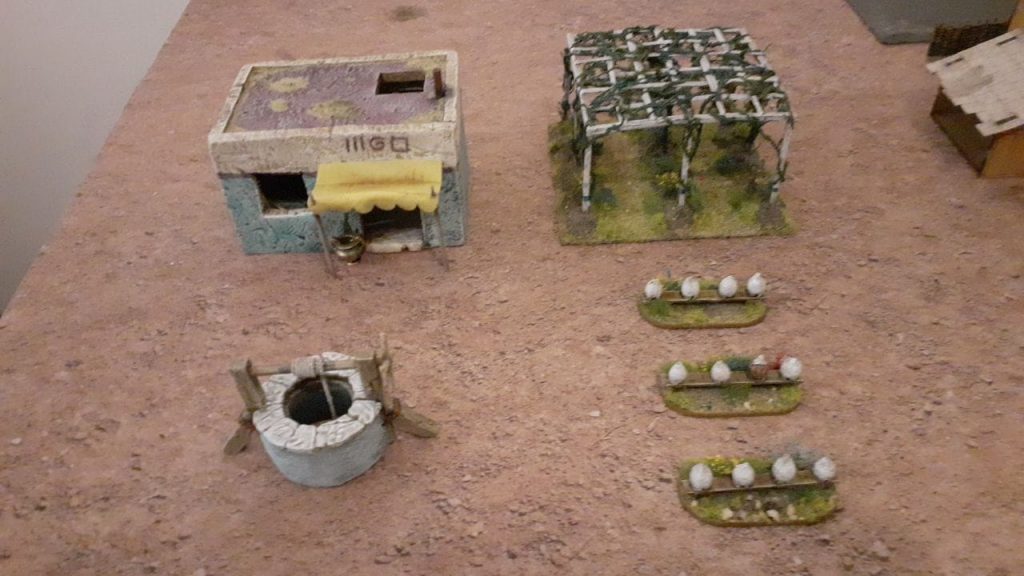
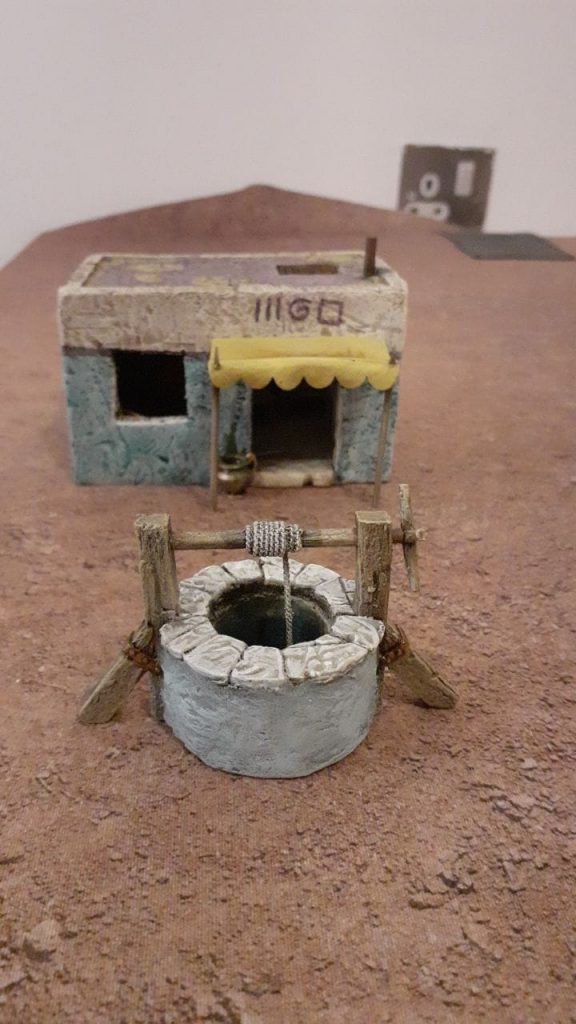
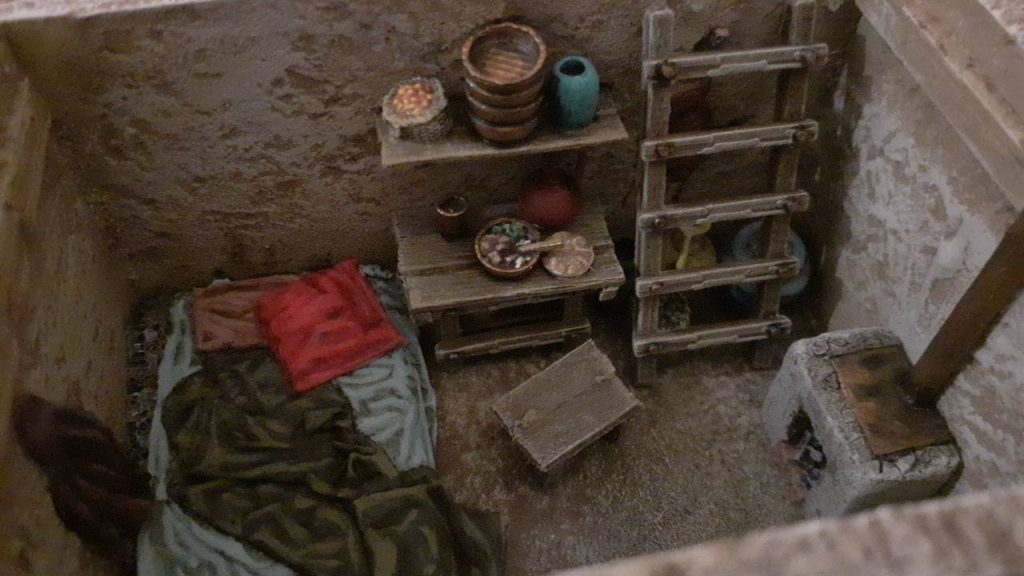
More information here.
The Vintage RPG Podcast on RuneQuest
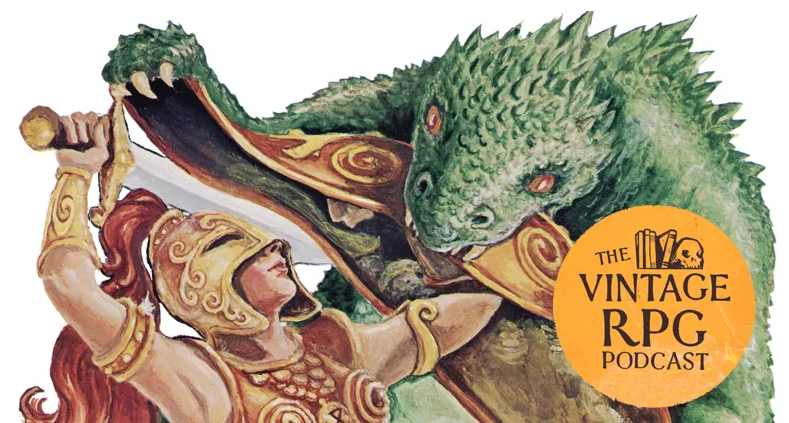
The Vintage RPG Podcast has a new episode out where they look at the history of RuneQuest, its origins, its legacy, and more.
Snakepipe Hollow Height Map
We’ve featured D R’s Gloranthan 3D explorations before, and here’s more: a visualization of Snakepipe Hollow’s cave complex from the outside, to get an idea of the height differences. This is great because it’s easy to forget about the third dimension while looking at 2D maps in scenario!
Some More Origins of Gloranthan Names
French archivist and Gloranthan scholar 7Tigers has found a few fun entries from the old RuneQuest Digest mailing list (dating back to 1994). Sandy Petersen explains where some Gloranthan names come from. You might have heard some of these stories before, while others might be new to you:
– Cam’s Well: Cam Stafford, Greg’s wife at the time.
– The Biggle Stone: Clint Bigglestone, friend and RPGer
– Waha the Butcher: a high school acquaintance of Greg, who is unaware of his high honor. His war cry was “Waaaahaaaa!” and his dad was a butcher, a fact of which he often boasted.
– The Tada Shi (people of the Golden Age): Tadashi Ehara, Chaosium’s one-time business manager
– Yan Starcere (Humakti hero cult): Ian Starcher, who argued that Humakt should have an anti-resurrection spell. Yan Starcere provides same.
– Swenstown: Anders Swenson, well known bon vivant and RPGer in the Bay area.
– Makla Mann: Mac, a famed gamer and figure painter from the Los Angeles area.
And of course, a classic, although I had heard that Greg changed the name to avoid Disney copyrights:
An unsung friend of Greg’s is directly responsible for the Ducks! Here’s how it happened. Greg needed a name for one of the towns on the White Bear Red Moon map, and asked this pal to name it. He instantly responded, “Duckburg”. Greg thought that was a little too unGloranthan, and suggested “Duck Point” instead. His friend said, “Well, okay. But it’s gotta have ducks in it!” And the rest is history.
Iconic Production’s JM Shows You The Gods War
JM, whom you might know from the Exploring Glorantha videos with Evan Franke, or from his bronze-age RPG Jackals, is showing off Petersen Games’ The Gods War, one of the few board games that require an entire extra room in your house for storage and play. If you’re still waiting on that second Kickstarter to get into manufacturing, this might offer a little vicarious relief.
Fantasy Worlds That Aren’t Magical Earth
Well-known sci-fi and fantasy website TOR.com has an article about fantasy worlds that aren’t “just magical Earth”. Since I’m mentioning it here, you can bet Glorantha shows up in it, surprisingly enough!
Although Stafford began work on his Bronze Age fantasy setting of Glorantha in the 1960s, it was not generally available to the public until the 1970s, when game company Chaosium incorporated the setting into board games like White Bear and Red Moon and Nomad Gods, and most significantly (at least from my personal perspective), the roleplaying game RuneQuest.
On a small scale, Glorantha looks Earth-like, featuring two large continents separated by a vast sea. Pull back for greater perspective, and this familiar arrangement is revealed as the top of a cube floating in a sea of chaos, surrounded by a great sphere beyond which sensible mortals do not explore. This is a magic-imbued world operating according to rules entirely unlike the rules of our world and the shape of the world reflects that.
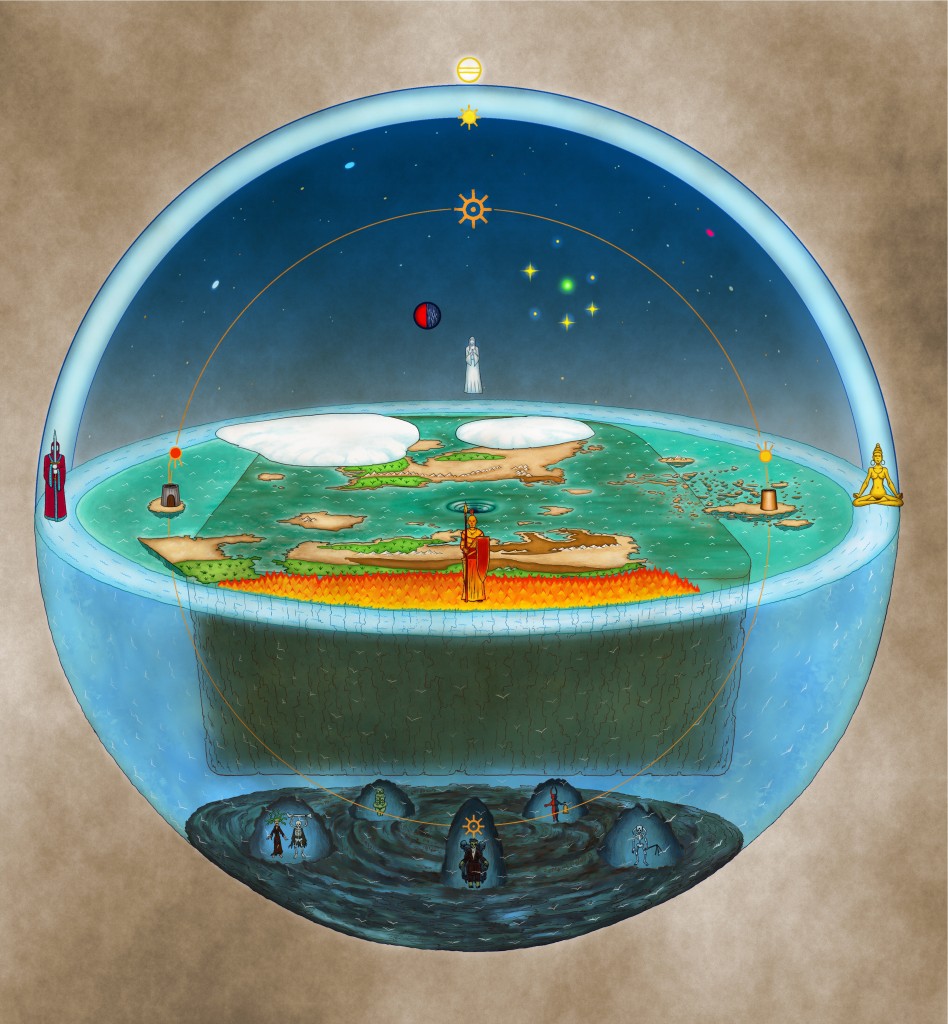
I would have thought they had way enough novels and book series to pick from for that kind of article but hey, I’m not complaining.
Elsewhere on Arachne Solara’s Web
Not everything is about Glorantha, although most things are! Here are loosely relevant things that we found on the interwebs.
The Lonely Castle
One of my favourite websites, Atlas Obscura, has many articles on weird and interesting places. I was reminded this week that it’s also a good inspiration for Gloranthan places:
Carved into a massive boulder, Qasr al-Farid, or “The Lonely Castle,” is a stunning ancient structure that rivals the majesty of any carved architecture in the world.
Created around the 1st century CE, the tall facade was never actually finished. The description of the site as a “castle” is misleading, as the grand carving is actually a tomb that was built as part of the ancient Nabatean site of Hegra. The Nabateans had a unique construction technique that saw their tombs being chiseled right out of the rock from the top down.
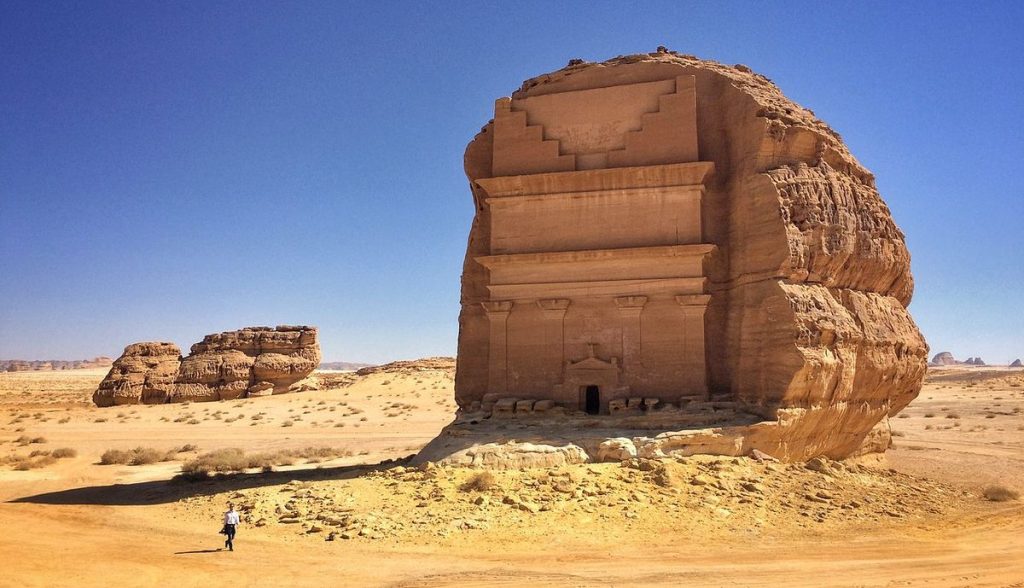
More here.
Kneeling Bull With Vessel
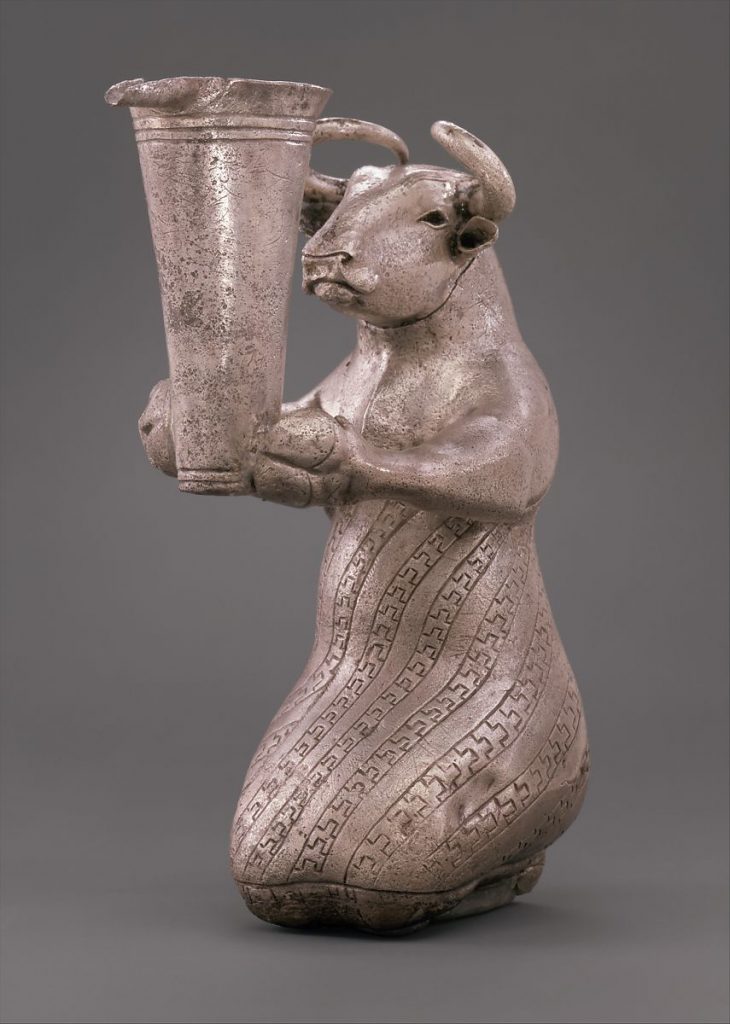
The pretty historical artifact of the week is this silver bull from around 3000 BCE. More info here.
Thank you for reading
That’s it for this week! Please contact us with any feedback, question, or news item we’ve missed!




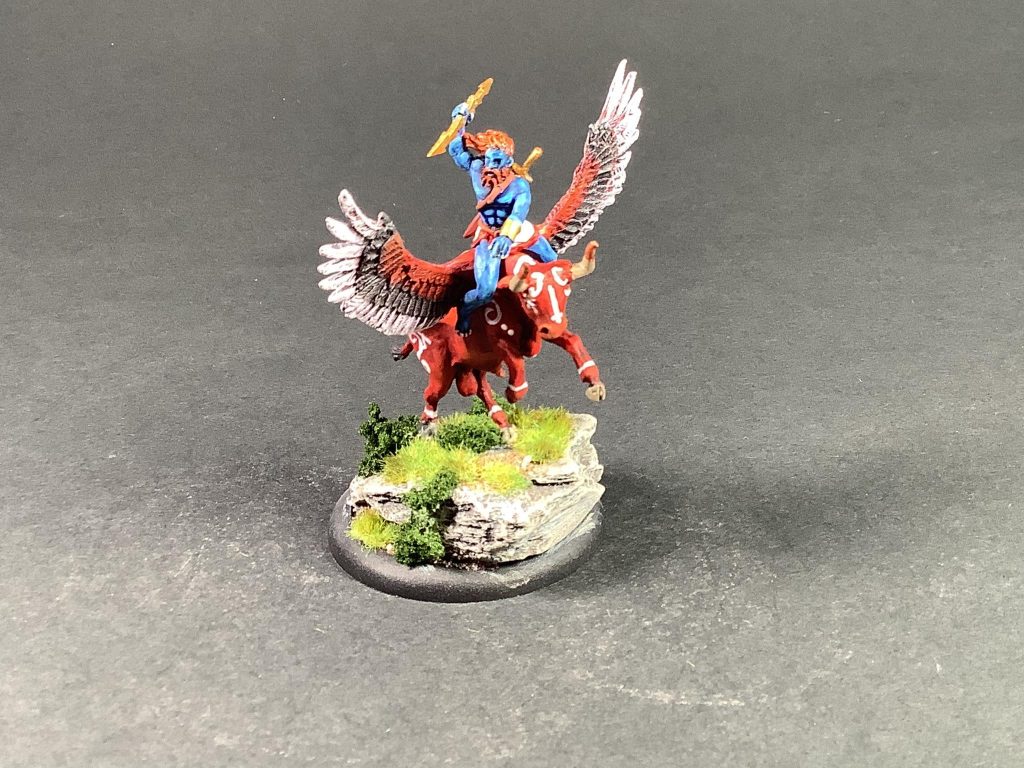
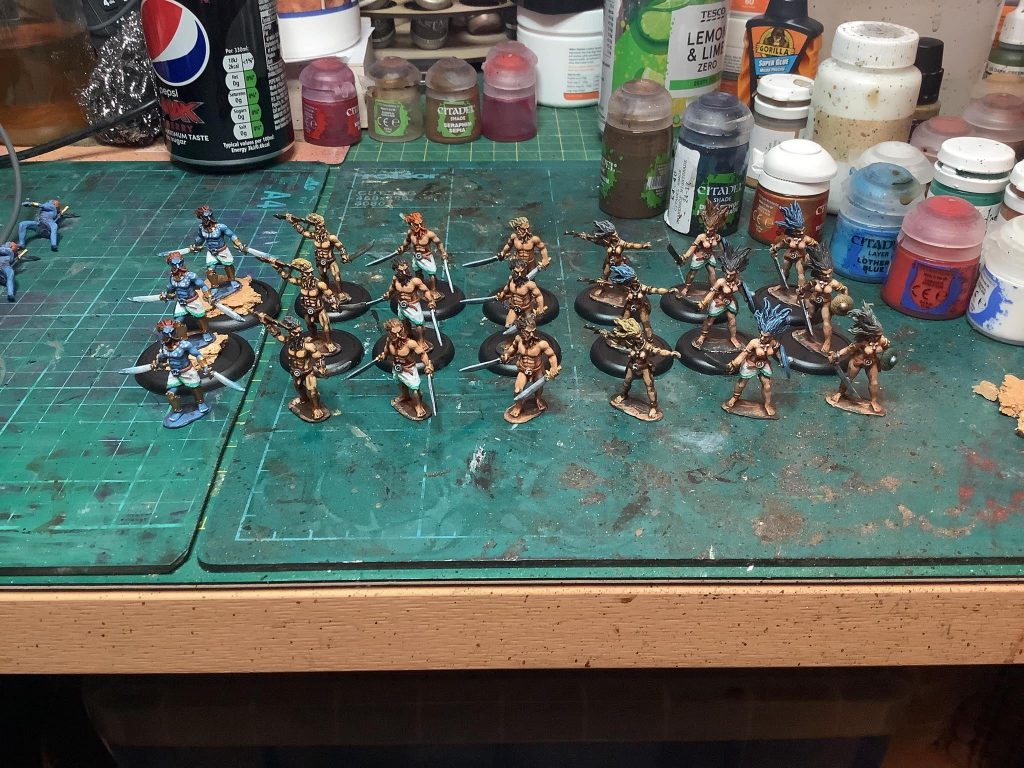
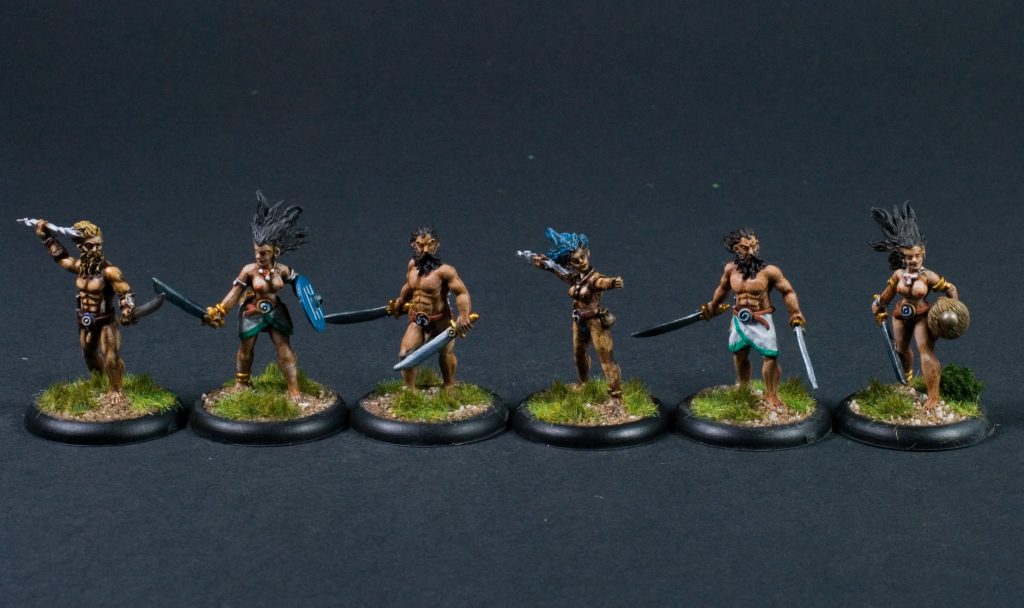
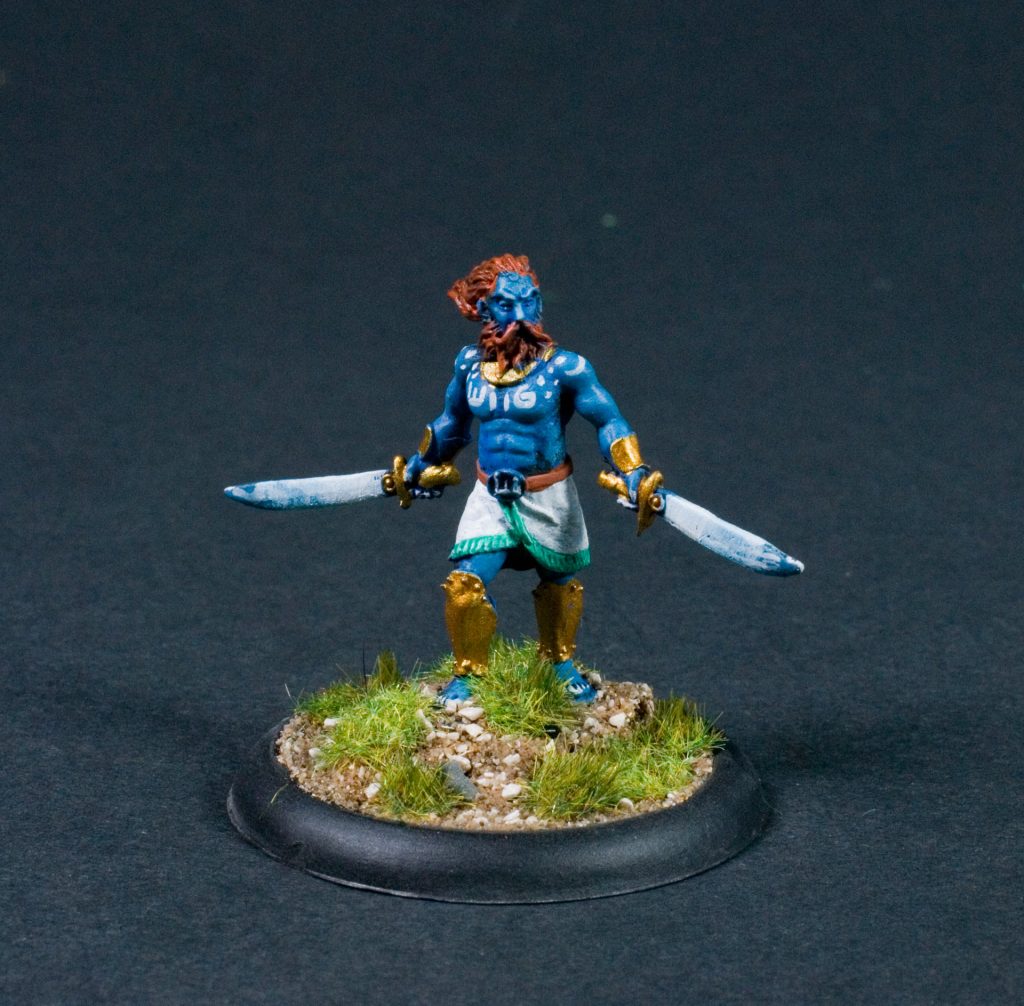
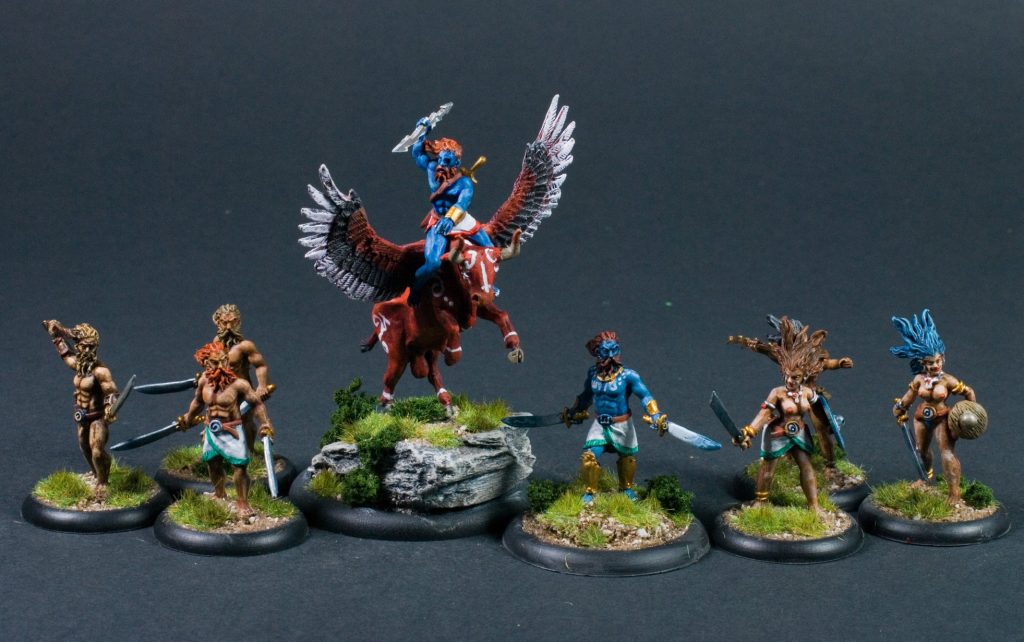
2 comments on “Journal of Runic Studies #36”